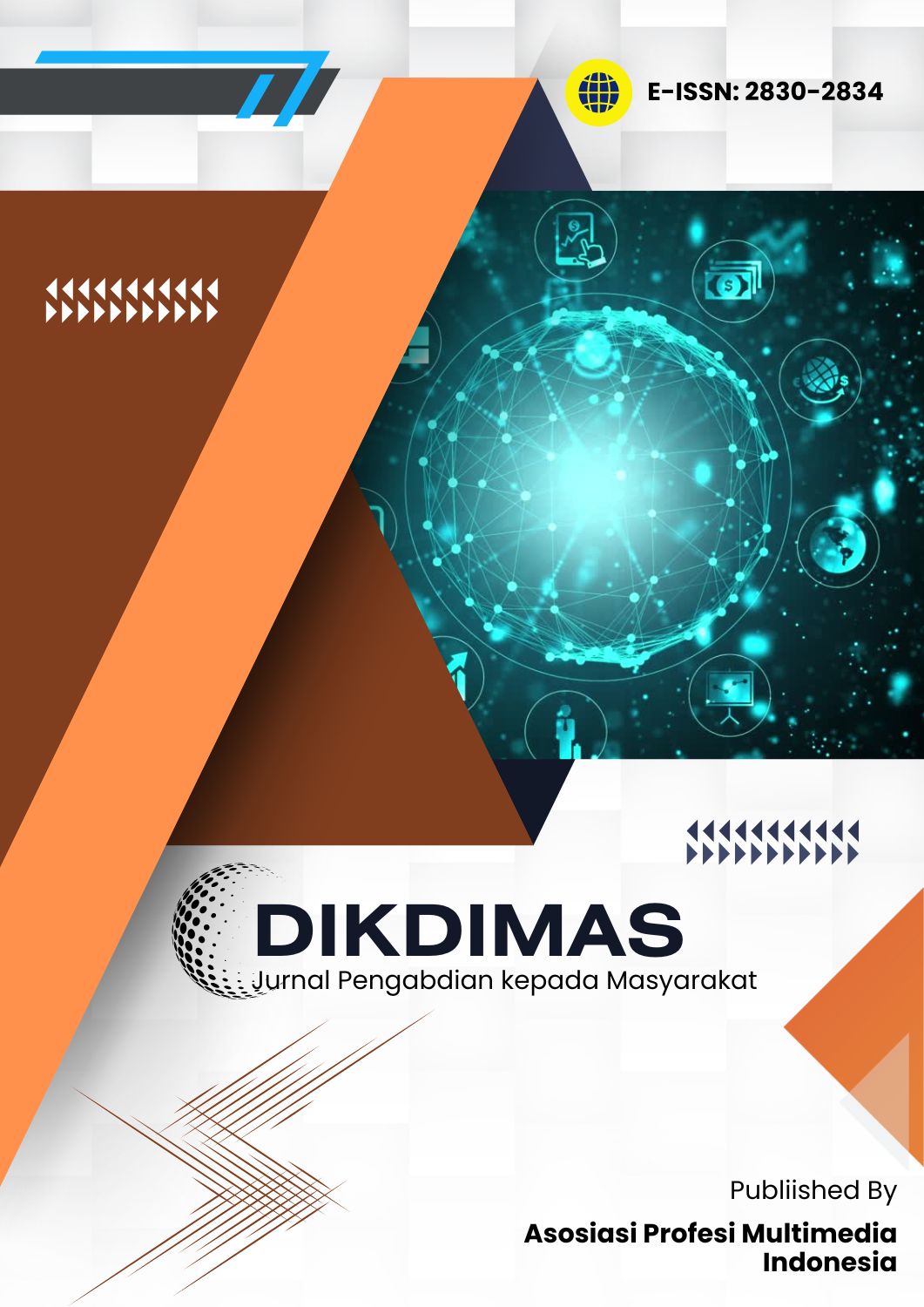Education on Giving Leaflets and The Potential of Karamunting Leaves (Rhodomyrtus Tomentosa) Herbal Efficacious in Society
Main Article Content
Abstract
Coronavirus disease (COVID-19) is spreading rapidly throughout the world including Indonesia. The use of herbal medicinal plants has increased since the Corona Virus Disease (COVID-19) pandemic, one of which is karamunting leaves. The methods used include: Field observations, we recorded the number of residents, their work and the plants that grow in the yard so that they can provide education to the community, especially in the North Landasan Ulin Village, Lianganggang District, Banjarbaru City. The results of the initial observation activities were carried out to look for problems in the community, the problems encountered by the community service team were the lack of public knowledge about plants that have the potential for traditional medicinal properties. Planting in the yard of the house has a characteristic as an herbal medicine. The conclusion from this activity was that education and giving leaflets for karamunting plants received a positive response from the community, after being given materials and leaflets as well as interactive discussions, the community realized the importance of using herbal medicines as an alternative treatment and increasing body immunity.
Downloads
Article Details
Copyright (c) 2023 DIKDIMAS : Jurnal Pengabdian Kepada Masyarakat

This work is licensed under a Creative Commons Attribution-ShareAlike 4.0 International License.
- Authors retain copyright and acknowledge that the Journal of Multidisciplinary Applied Natural Science is the first publisher, licensed under a Creative Commons Attribution License.
- Authors are able to enter into separate, additional contractual arrangements for the non-exclusive distribution of the journal's published version of the work (e.g., post it to an institutional repository or publish it in a book), with an acknowledgment of its initial publication in this journal.
- Authors are permitted and encouraged to post their work online (e.g., in institutional repositories or on their website) prior to and during the submission process, as it can lead to productive exchanges and earlier and greater citation of published work.
References
Pantur F., Aloisius M, L., Maria B.K., Anselmus B.B., Faderina K, Maria A.,Yustina L.,Erly G,B. “Edukasi Pemanfaatan Tanaman Herbal Untuk Meningkatkan Imunitas Tubuh Pada Masyarakat Kelurahan Liliba”. Jurnal Pengabdian Masyarakat Apektamas, vol 5, no. 2, pp. 153-159, 2022.
Nugroho, W. T. Alanish, N. Istiqomah, & I.Cahyasari, “Jurnal of Bionursing Literature Review: Transmisi Covid-19 dari Manusia ke Manusia Di Asia”, vol. 2, no. 2, pp. 101–112. 2020.
Salim & Munadi, Er. “Info Komoditi Tanaman Obat”. Jakarta: Badan Pengkajian dan Pengembangan Perdagangan Kementrian Perdagangan Republik Indonesia. 2017.
Kemenkes RI. “Pedoman Pencegahan dan Pengendalian Coronavirus Disease (COVID-19)”, Math Didact. J.Pendidik.Mat. 2019.
Dewi & B. A. Riyandari, “Potensi Tanaman Lokal sebagai Tanaman Obat dalam Menghambat Penyebaran COVID-19”, Jurnal Kesehatan, vol. 07, no. 02, pp, 112–128. 2020.
Harefa, D. Pemanfaatan Hasil Tanaman Sebagai Tanaman Obat Keluarga (TOGA). Jakarta Press, 2020.
Hairunisa and H. Amalia, “Review: penyakit virus corona baru 2019 (COVID-19)”, Jurnal Biomedika dan Kesehatan, vol. 3, no. 2, pp, 90–100, 2020.
Kusumo, A. R., Wiyoga, F. Y., Perdana, H. P., Khairunnisa, I., Suhandi, R. I., & Prastika, S. S. “Jamu Tradisional Indonesia: Tingkatkan Imunitas Tubuh Secara Alami Selama Pandemi”. Jurnal Layanan Masyarakat. Journal of Public Services, vol. 4, no. 2,pp,465-469. 2020.
Kartina, Mohammad W.A, Muhammad A. “Characterisation of Phytochemical Content of Leaf Extract from Karamunting (Melastoma malabatchricum L.) Using Gas Chromatography Mass Spectrometry (GC-MS)”. Biota, vol. 4, no. 1.pp. 16-23. 2018.
Silalahi M., “Pemanfaatan Citrus aurantifolia (Christm. et Panz.) sebagai Bahan Pangan dan Obat serta Bioaktivitas,” vol. 17, no. 1, pp. 80–88. 2020.
Ermawati N., Nila O, Muhammad U.B. “Edukasi Pemanfaatan Tanaman Obat Tradisional Dalam Rangka Self Medication di Masa Pandemi Covid-19”. Jurnal Abdi MOESTOPO. vol. 05, no. 02, pp. 148-156. 2022.
Prahesti, E. “Pengaruh Penyuluhan Kesehatan Reproduksi Terhadap Pengetahuan Pernikahan Dini Pada Siswa Kelas X Di Sman 1 Banguntapan Bantul’. Jogjakarta Press. 2018.
Azhari N., Yusriani & Een K. “Pengaruh Edukasi Melalui Media Leaflet Terhadap Pengetahuan Siswa TentangKesehatan Reproduksi Remaja”. Jurnal Riset Media Keperawatan. vol. 5 no. 1, pp. 38-43. 2022.
Hugh Tan, T.W. & Yeo, C.K. “The Potential of Native Woody Plants for Enhancing the Urban Waterways and Waterbodies Environment in Singapore,” Raffles Museum of Biodiversity Research and Singapore-Delft Water Alliance, National University Singapore, Singapore. p. 14. 2019.
Irnawati, I., Suriah, S., & Yusriani, Y. “Pengaruh Edukasi Melalui Media Whats App dan Leaflet Terhadap Perubahan Perilaku Berisiko Pada Siswa”.Window of Health: Jurnal Kesehatan, vol 4, no. 6, pp. 297-306. 2019.
Kusumo, A. R., Wiyoga, F. Y., Perdana, H. P., Khairunnisa, I., Suhandi, R. I., & Prastika, S. S. “Jamu Tradisional Indonesia: Tingkatkan Imunitas Tubuh Secara Alami Selama Pandemi”. Jurnal Layanan Masyarakat. Journal of Public Services, vol 4, no 2, pp 465-469, 2020.
Hapsari, Esah,M , Riska A. F., Aprilia W.P., Achmad Z.S., “Edukasi Pemanfaatan Tanaman Obat Keluarga dalam Usaha Peningkatan Derajat Kesehatan di Dusun Nabin Kulon Magelang”. E-Dimas jurnal Pengabdian Masyarakat. vol 13, no 1, pp. 110-114. 2022.



 M. Andi Chandra
M. Andi Chandra
